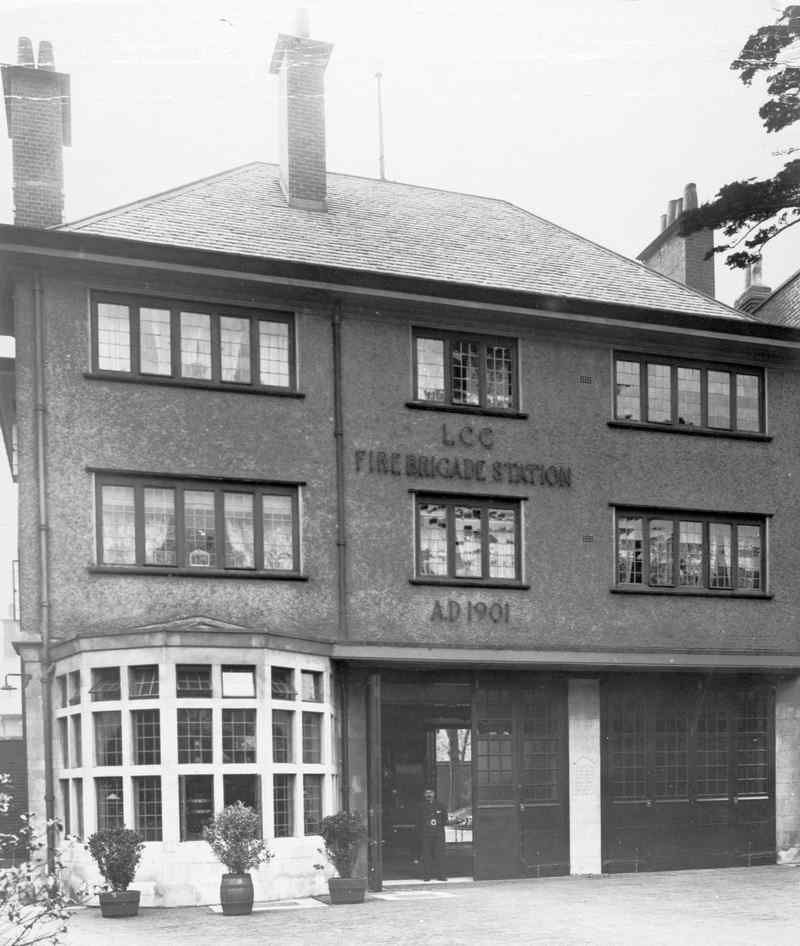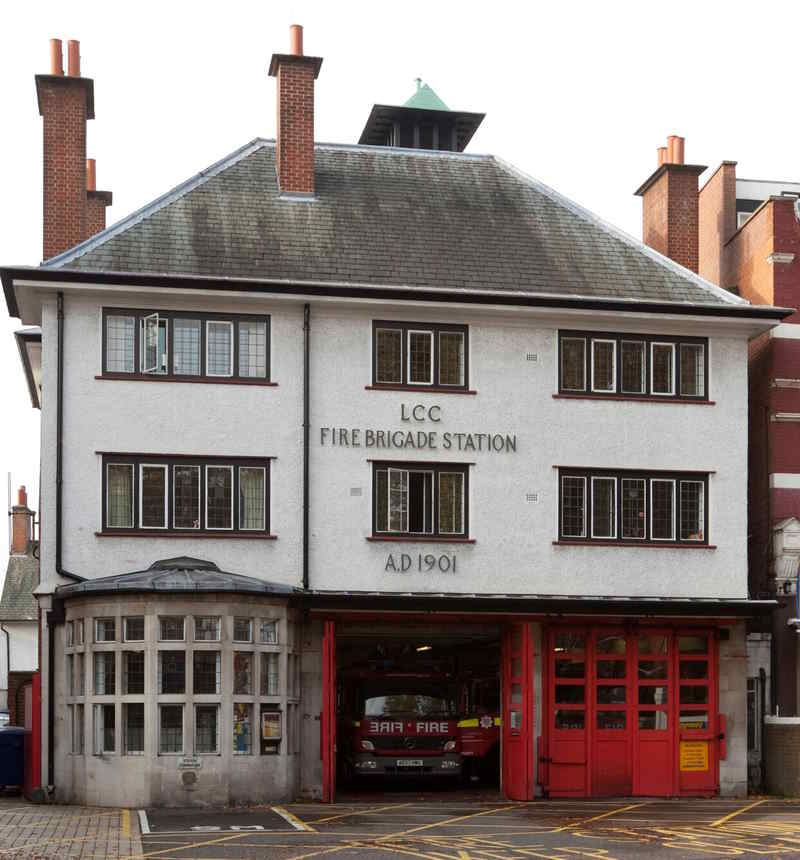
Origins of the fire station
The station was originally called West End Lane Fire Station and opened for the Metropolitan Fire Brigade (MFB) on 6 February 1902.
Architect W A Scott worked on the design for the London County Council (LCC) Architects Department and the foundation stone was laid on 24 June 1901 by J D Gilbert, Chairman of the Fire Brigade Committee. The area had been served by fire stations at St John’s Wood (1870) and Hampstead Village (1874), however the population growth in the area meant a new station was needed.
Scott's design of the fire station reflected its then semi-rural location and he gave it the appearance of a large detached country house. The upper two floors were accommodation for the firefighters and their families. The accommodation also included cottages that were built to the rear of the station yard.
The station originally housed a steam horse-drawn engine, a horse-drawn escape cart and a hose cart. The crew included a Station Officer, nine firefighters and two coachmen. The station’s stables provided accommodation for the two pairs of horses. This was situated at the back of the appliance bay.
West Hampstead during the Second World War
In the lead up to the Second World War, the Auxiliary Fire Service was established. Substations were set up in nearby local schools and other suitable buildings. West Hampstead was responsible for six substations (20U – 20Z).
In 1941 all fire brigades across the United Kingdom were brought together to form the National Fire Service (NFS).
After the war
The National Fire Service was disbanded in 1948. The West Hampstead Fire Station then returned to local authority control as part of London Fire Brigade.
The fire station building was granted listed status (Grade II) in 1974. The building is noted by Historic England as "of special architectural interest as one of a remarkable series of fire stations built by the London County Council between 1896 and 1914, each executed to a bespoke design". The Arts and Crafts architectural features, including the stone bay window, were also noted in the grade listing details.
The fire station today

West Hampstead Fire Station (A41) is still operational today. The station currently houses a pump fire engine and a pump ladder fire engine. It is crewed by a Station Officer, a Sub Officer, a Leading Firefighter and nine firefighters.